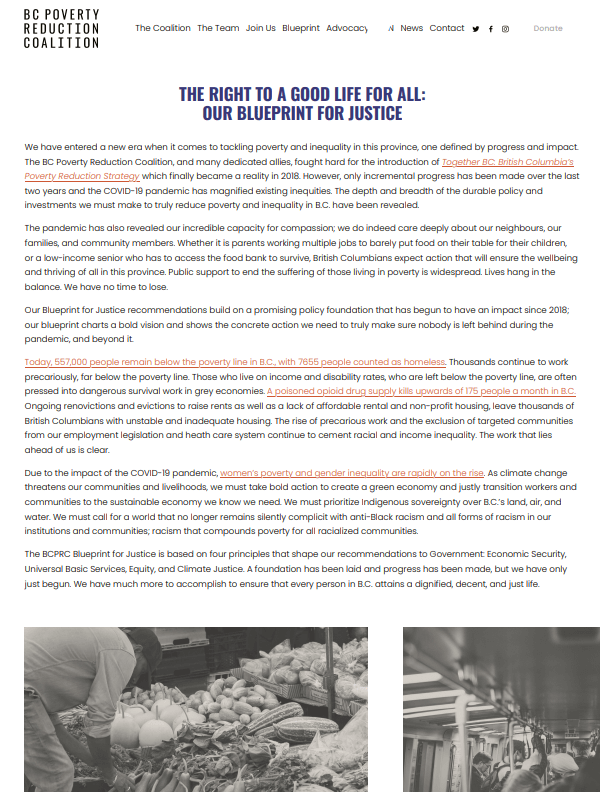Search the Baseline Project
To search the recommendations database, please visit the database main page.
To search the recommendations database, please visit the database main page.

The BC Poverty Reduction Coalition’s “Blueprint for Justice” released in 2020 describes how the COVID-19 pandemic has magnified existing inequities and revealed the depth and breadth of the durable policy and investments needed to truly reduce poverty and inequality in B.C. It describes the concrete actions needed to ensure nobody is left behind during the pandemic and beyond it, centering its recommendations on four principles: economic security, universal basic services, equity and climate justice. The full blueprint can be found here.